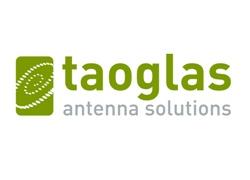Taoglas launches a small form factor of ultra-wideband antennas

Taoglas, a provider of IoT and M2M antenna products, launched an industry-first range of small-form-factor ultra-wideband (UWB) antennas specifically designed to enable centimetre-level positioning and angle-of-arrival applications, including asset tracking, follow-me drones, healthcare monitoring, smart home services,and other applications that demand high-performance indoor localisation capabilities. The antennas offer high efficiencies across a wide spectrum of frequency bands from 3 GHz to 10 GHz.
Indoor wireless positioning has long been hampered by technologies that were not designed for this purpose, such as Bluetooth, Wi-Fi and assisted GPS. UWB is a low-power digital wireless technology that offers significant increases in location precision and range while transmitting large amounts of digital data short distances over a wide spectrum of frequency bands. UWB’s low-power requirements offer increased battery life of sensors and tags, leading to reduction in overall operational costs.
Taoglas’ range of UWB antennas, designed in Taoglas’ Munich, Germany, engineering centre, features both state-of-the-art flexible and rigid PCB embedded UWB antennas as well as UWB embedded SMT chip antennas. The flexible FXUWB range of antennas were developed utilising a simple “peel and stick” assembly process, attaching securely to non-metal surfaces via 3M adhesive, with a highly flexible micro-coaxial cable mounting.
There is also a version in a rigid PCB format, if desired. The UWB chip antennas are designed to be surface mounted directly onto a PCB. Both series of antennas help designers future-proof devices, keeping costs low while covering all common UWB commercial bands.
“Today’s emerging applications require very precise indoor localisation of assets, objects and people,” said Ronan Quinlan, co-CEO, Taoglas. “UWB can work as a type of ‘indoor GPS’ to help solve the precision dilemma for indoor applications, bringing much greater levels of precision than current technologies. We optimise complex antenna performance parameters such as the Group Delay, Polarisation and Fidelity Factor.
Taoglas’ first-to-market line of UWB antennas are designed to help our customers capitalise on this need for real-time precision localisation, with the quality, reliability and flexibility they’ve come to expect from working with Taoglas. One particular antenna we co-developed exclusively with DecaWave is the UWCCP.01 circularly polarised chip antenna, the first mass-market antenna specifically designed to enable a new generation of autonomous applications.”

Ronan Quinlan
The UWB antennas were designed for use with the DecaWave DW1000 chip, and are also compatible with any other UWB sensor modules on the market. Since its launch in December 2013, more than 3.5 million units of the DW1000 have shipped across multiple industries.
From real-time location of people and assets in factories, hospitals and mines, to automotive keyless entry systems, to drones, connected home and sports, the accurate location and secure communications capability of the DW1000 has already taken numerous applications to new heights.
“Antennas play a key role in our customers’ applications. Performance is a given for customers, but the capability to adapt to the constraints of the applications—size, shape, electronics environment—is equally important as end products get smaller and smaller.
DecaWave is really pleased to partner with Taoglas, as their expertise is not only in delivering high-performance, off-the-shelf antennas, but also to provide customisation services that will be highly beneficial to our customers,” said Ciaran Connell, CEO and co-founder, DecaWave.
To learn more about Taoglas’ range of UWB antennas, visit Taoglas in Booth N.614 at Mobile World Congress Americas, September 12-14, 2017, in San Francisco, or visit the website.
Comment on this article below or via Twitter @IoTGN
